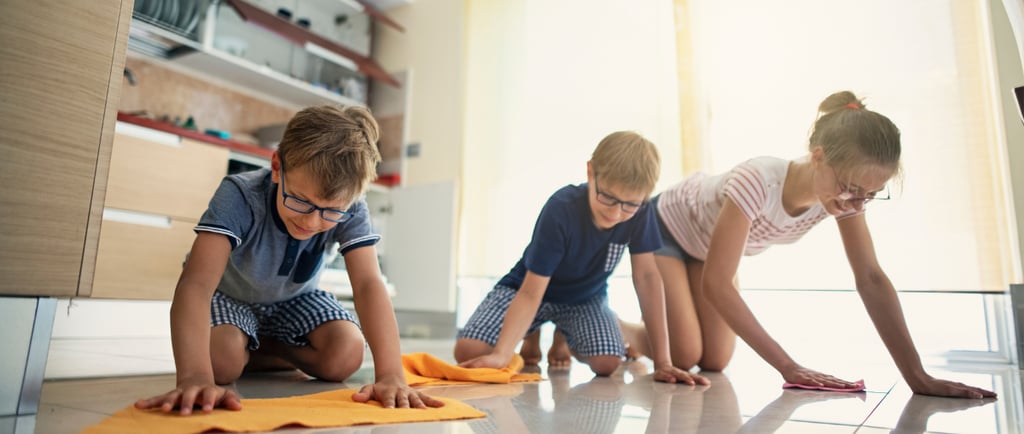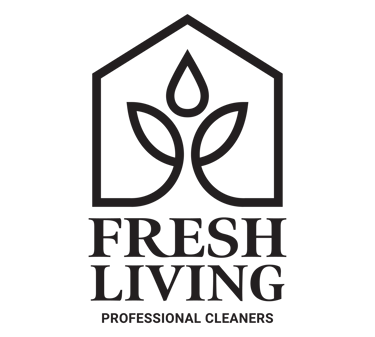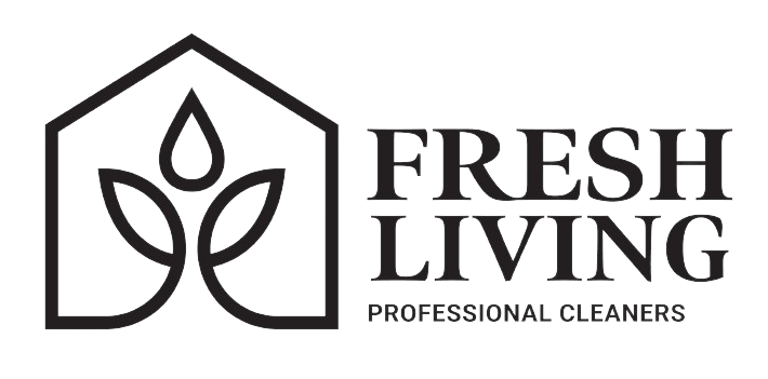How to Keep Kitchen Floors Clean
Discover the secrets to pristine kitchen floors with this guide. From essential prep steps to eco-friendly cleaning solutions, we've got you covered. Whether you're dealing with tile, hardwood, vinyl, or laminate, learn effective techniques to banish dirt and stains. Say goodbye to messy spills and hello to gleaming floors with these tips. Keep your kitchen sparkling and your home inviting with our foolproof advice on floor maintenance.
5/28/20244 min read


A clean kitchen floor is not just about aesthetics; it’s the foundation of a healthy and inviting home. From prepping to polishing, here's your comprehensive guide to maintaining spotless kitchen floors.
Preparing Your Kitchen Floor for Cleaning
Clearing the Area:
Before diving into the cleaning process, ensure your floor is clear of obstacles. Move chairs, trash cans, and other items to create a clear workspace.
Sweeping or Vacuuming:
Start sweeping or vacuuming the floor to remove loose dirt, crumbs, and debris. This initial step sets the stage for a thorough cleaning.
Choosing the Right Cleaning Products:
Select cleaning products tailored to your floor type. Using the appropriate cleaner ensures optimal results without damage, Whether tile, hardwood, vinyl, laminate, or concrete.
Cleaning Different Types of Kitchen Floors
Tile Floors:
A mild detergent solution and scrub brush work wonders for tile floors, particularly for grout lines that tend to trap dirt.
Hardwood Floors:
Opt for a specially formulated hardwood floor cleaner to preserve the finish and beauty of your hardwood floors.
Vinyl Floors:
A mixture of warm water and gentle dish soap effectively cleans vinyl floors without causing damage.
Laminate Floors:
Use a cleaner specifically designed for laminate surfaces to maintain their shine and durability.
Concrete Floors:
Concrete floors may require a more heavy-duty cleaning solution to tackle stubborn stains and grease buildup.
Effective Cleaning Techniques
Mopping:
Mopping is a classic technique for cleaning floors. Use the appropriate mop and cleaning solution for your floor type to ensure a thorough clean.
Scrubbing:
For stubborn stains and grime, scrubbing with a brush or sponge can provide targeted cleaning power.
Spot Cleaning:
Address spills and messes promptly with spot cleaning to prevent them from becoming more challenging to clean later on.
Steam Cleaning:
Steam cleaning offers a chemical-free way to sanitize floors, making it ideal for families with children or pets.
Preventive Measures for Clean Floors
Using Doormats:
Place doormats at entryways to trap dirt and debris before they reach your kitchen floor, reducing the need for extensive cleaning.
Implementing a No-Shoes Policy:
Encourage family members and guests to remove their shoes before entering the kitchen to minimize dirt and bacteria transfer.
Wiping Spills Immediately:
Promptly wipe up spills and messes to prevent them from seeping into the floor or causing stains.
Regular Maintenance Routines:
Establish a routine of daily sweeping or vacuuming and weekly mopping to keep your floors looking their best.
Special Considerations for High-Traffic Areas
Entryways:
Pay extra attention to entryways, as they tend to accumulate dirt and debris brought in from outside.
Around the Sink:
Keep the area around the sink clean and dry to prevent water damage and mold growth.
Near Cooking Areas:
Spills and crumbs are common near cooking areas; be diligent about cleaning these spots to maintain a hygienic environment.
Dealing with Stubborn Stains and Spills
Grease Stains:
Use a degreasing agent or a mixture of baking soda and water to tackle grease stains effectively.
Wine Spills:
Treat wine spills with a solution of vinegar and water to prevent staining and odor buildup.
Pet Accidents:
Neutralize pet odors and stains with an enzyme-based cleaner designed specifically for pet messes.
Food Residue:
Gently scrape off any food residue before applying a cleaning solution to prevent it from spreading or staining.
Maintaining Floor Seals and Finishes
Reapplying Sealants:
Regularly reapply sealants to protect tile and grout from moisture and stains.
Polishing Hardwood Floors:
Keep hardwood floors looking their best by periodically polishing them to restore shine and luster.
Protecting Grout Lines:
Seal grout lines to prevent discoloration and staining, particularly in high-traffic areas.
Incorporating Eco-Friendly Cleaning Practices
Using Natural Cleaning Solutions:
Opt for natural cleaning solutions such as vinegar, baking soda, and lemon juice to clean and disinfect your floors without harsh chemicals.
Reusable Cleaning Tools:
Invest in reusable cleaning tools like microfiber mops and cloths to reduce waste and minimize environmental impact.
Minimizing Water Usage:
Use spray bottles or mop wringers to control the amount of water used during cleaning, conserving this precious resource.
Safety Tips for Floor Cleaning
Proper Ventilation:
Ensure adequate ventilation while cleaning to prevent the buildup of fumes from cleaning products.
Handling Cleaning Chemicals:
Wear gloves and protective eyewear when handling cleaning chemicals to protect your skin and eyes from irritation.
Avoiding Slippery Surfaces:
Be cautious of slippery surfaces, especially when using wet cleaning methods like mopping or steam cleaning.
Troubleshooting Common Floor Cleaning Issues
Lingering Odors:
Combat lingering odors by sprinkling baking soda on the floor and letting it sit before vacuuming.
Dull or Streaky Finishes:
Buff floors with a microfiber cloth to restore shine and remove streaks caused by improper cleaning.
Discoloration:
Address discoloration by using a stain remover or bleach solution, following manufacturer instructions carefully.
Time-Saving Tips for Busy Individuals
Quick Daily Maintenance:
Incorporate quick daily maintenance tasks like sweeping or spot cleaning into your routine to keep floors looking their best with minimal effort.
Weekly Deep Cleaning Routines:
Set aside time each week for deep cleaning tasks like mopping and scrubbing to tackle dirt and grime buildup effectively.
Hiring Professional Cleaners:
Consider hiring professional cleaners for periodic deep cleaning sessions to maintain the cleanliness and hygiene of your kitchen floors.
Engaging the Family in Floor Cleaning
Establishing Chore Schedules:
Assign specific floor cleaning tasks to family members to distribute the workload and ensure everyone contributes to maintaining clean floors.
Making It Fun for Kids:
Turn floor cleaning into a game or challenge to make it more enjoyable for kids and encourage their participation.
Setting a Good Example:
Lead by example by demonstrating proper cleaning techniques and emphasizing the importance of maintaining clean floors for a healthy home environment.
A clean kitchen floor is the cornerstone of a clean and inviting home. By following these tips and techniques, you can keep your kitchen floors looking spotless and ensure a healthy environment for you and your family. Incorporate these strategies into your cleaning routine to enjoy the benefits of clean floors for years to come.


(609) 806 - 5565
help@freshlivingpc.com
Follow us on
